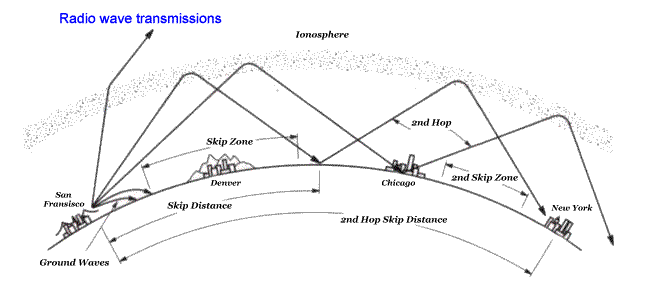Communications Satellites
Communications satellites allow radio, television, and telephone transmissions to be sent live anywhere in the world. Before satellites, transmissions were difficult or impossible at long distances. The signals, which travel in straight lines, could not bend around the round Earth to reach a destination far away and so had to be 'bounced' from station to station off the atmosphere (see diagram above). This caused loss of signal and a time delay in transmission. Because satellites are in orbit, the signals can be sent instantaneously into space and then redirected to another satellite or directly to their destination. The microwave frequency that is used allow the signals to pass easily through the atmosphere without much loss of signal. The satellite can either have a passive role in communications by simply bouncing signals from the Earth back to another location on the Earth; or take a more active role by using electronic devices called transponders that receive, amplify (increase the amplitude - strength of the signal), and re-broadcast the signals to the Earth. Communications satellites are usually in geostationary orbit but they can also be in highly elliptical orbits. This type of orbit is roughly egg-shaped - the satellite's velocity changes depending on where it is in its orbital path. When the satellite is in the part of its orbit that's close to the Earth, it moves faster because the Earth's gravitational pull is stronger. This means that a communications satellite can be over the region of the Earth that it is communicating with for the long part of its orbit but itt will only be out of contact with that region when it quickly zips close by the Earth.
|
Follow me...
|








